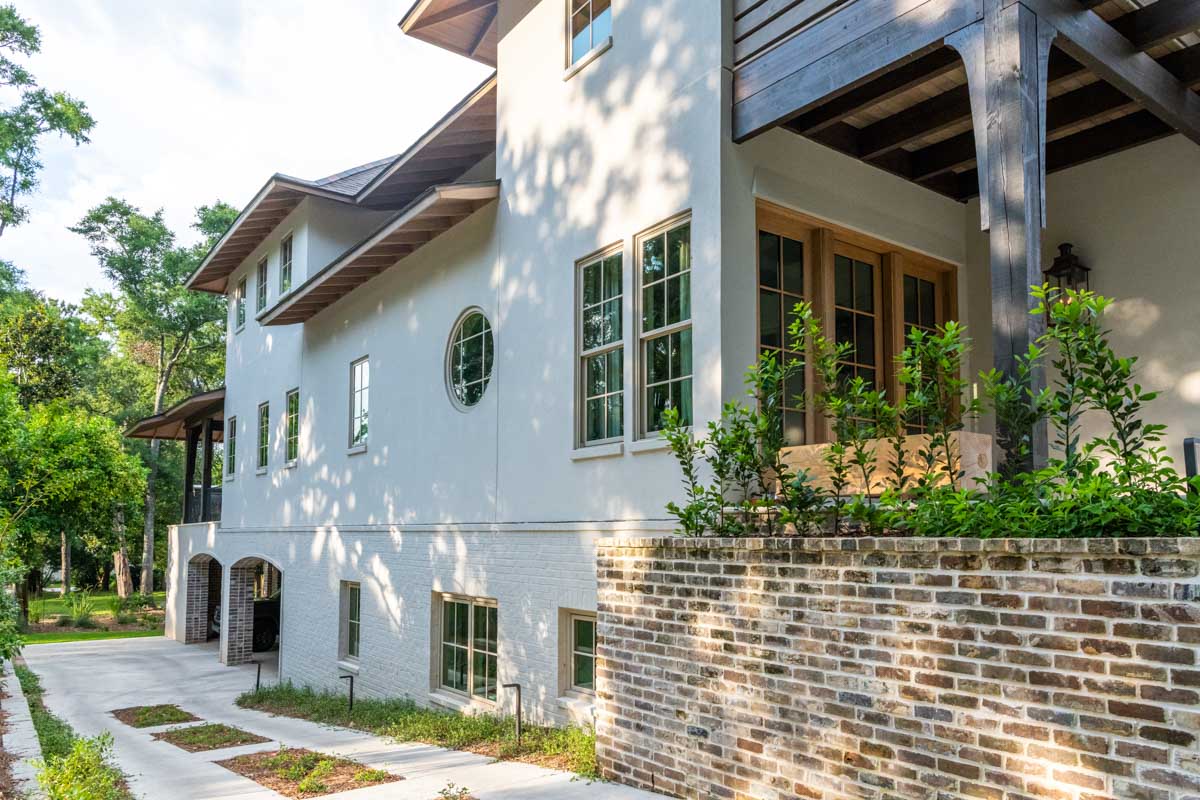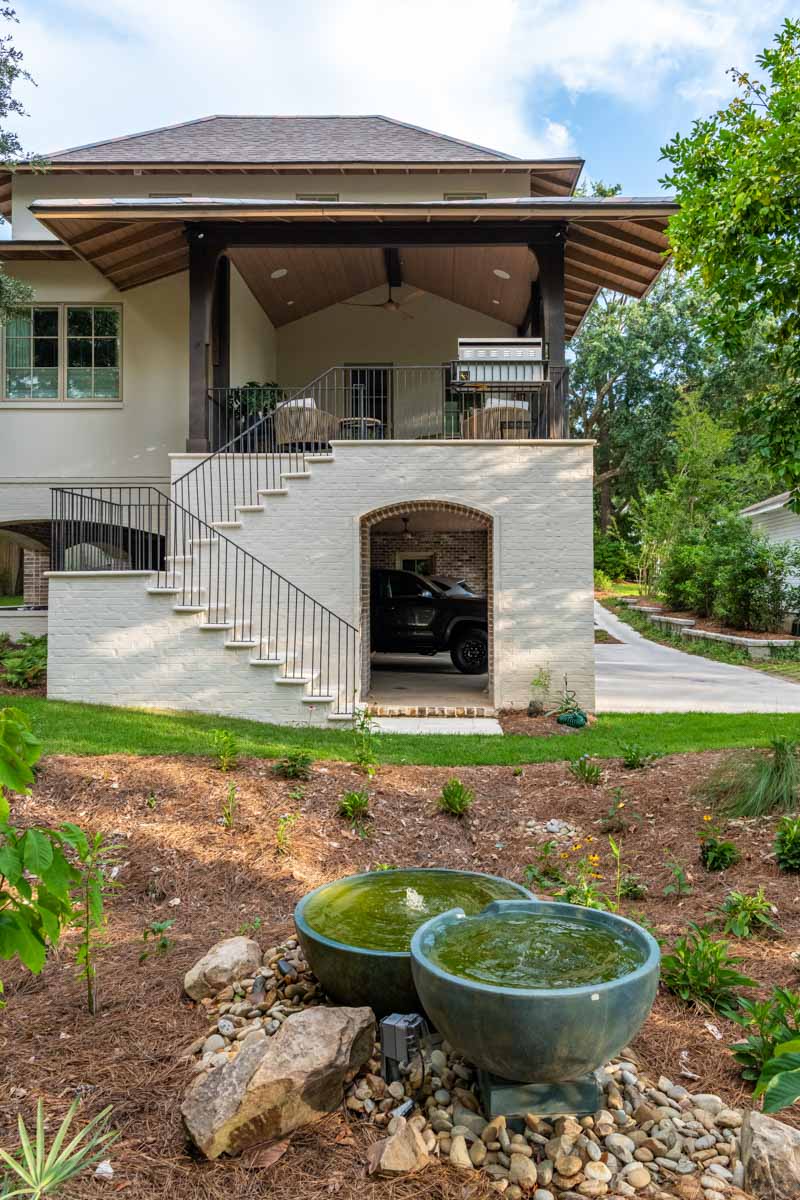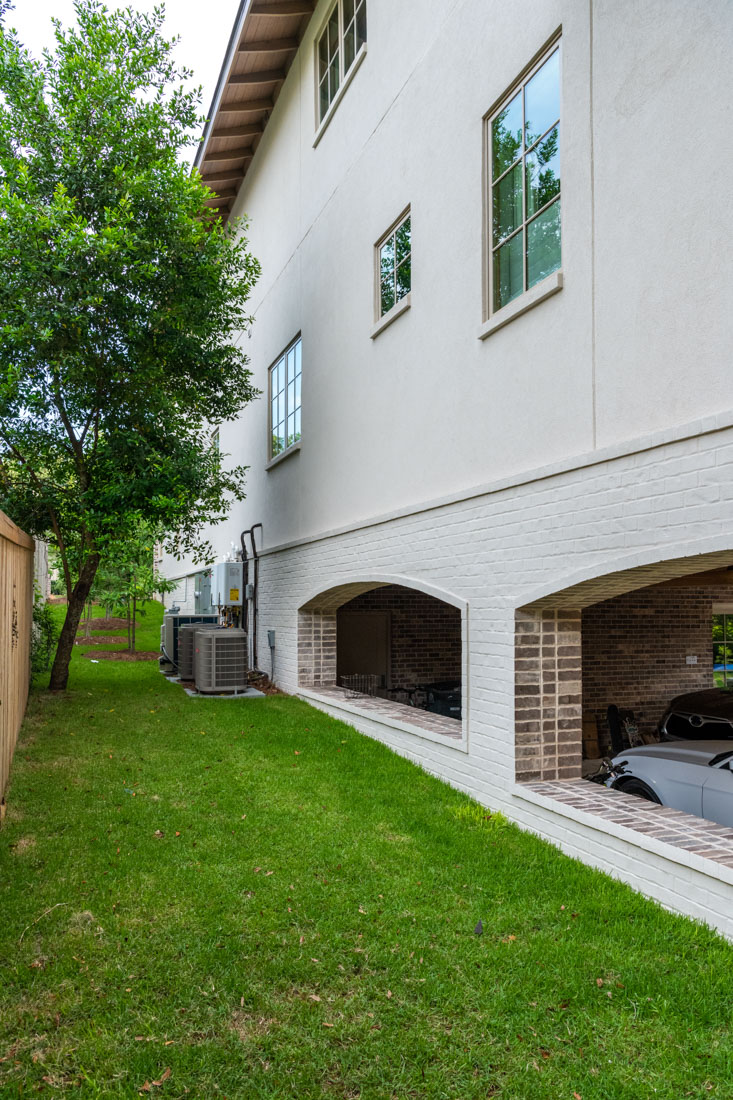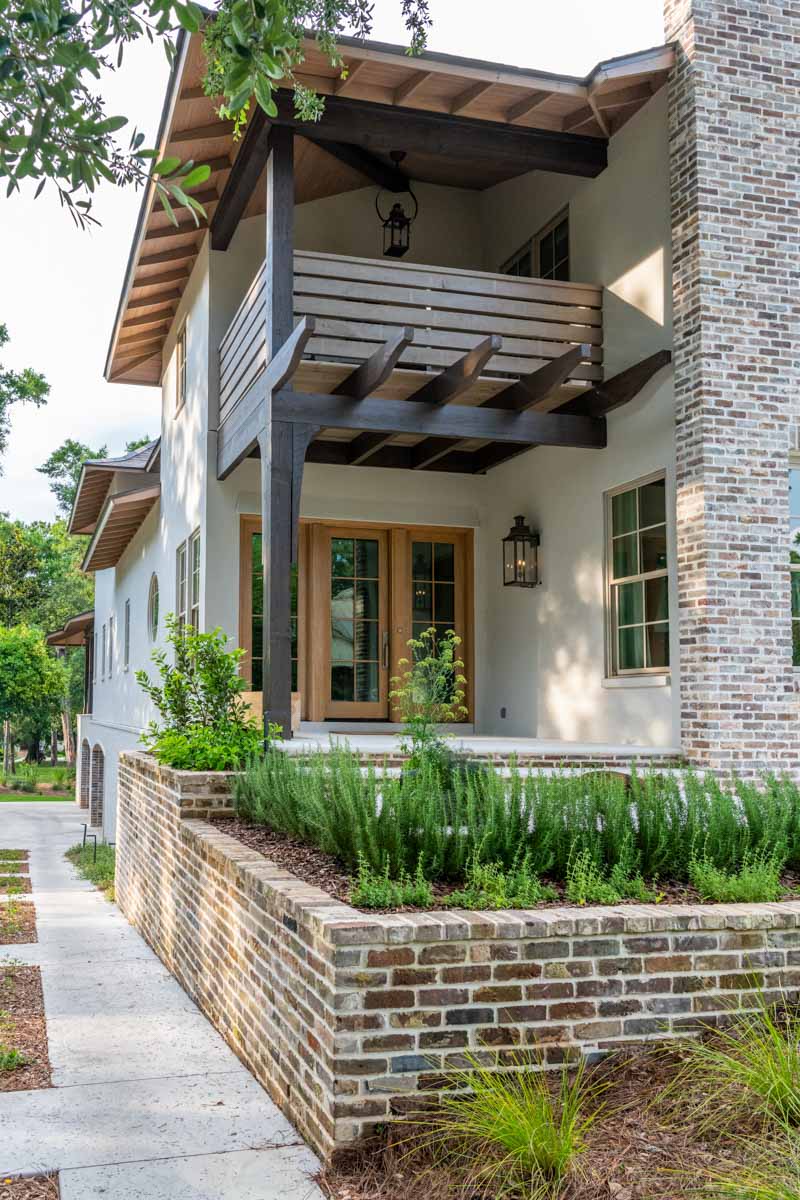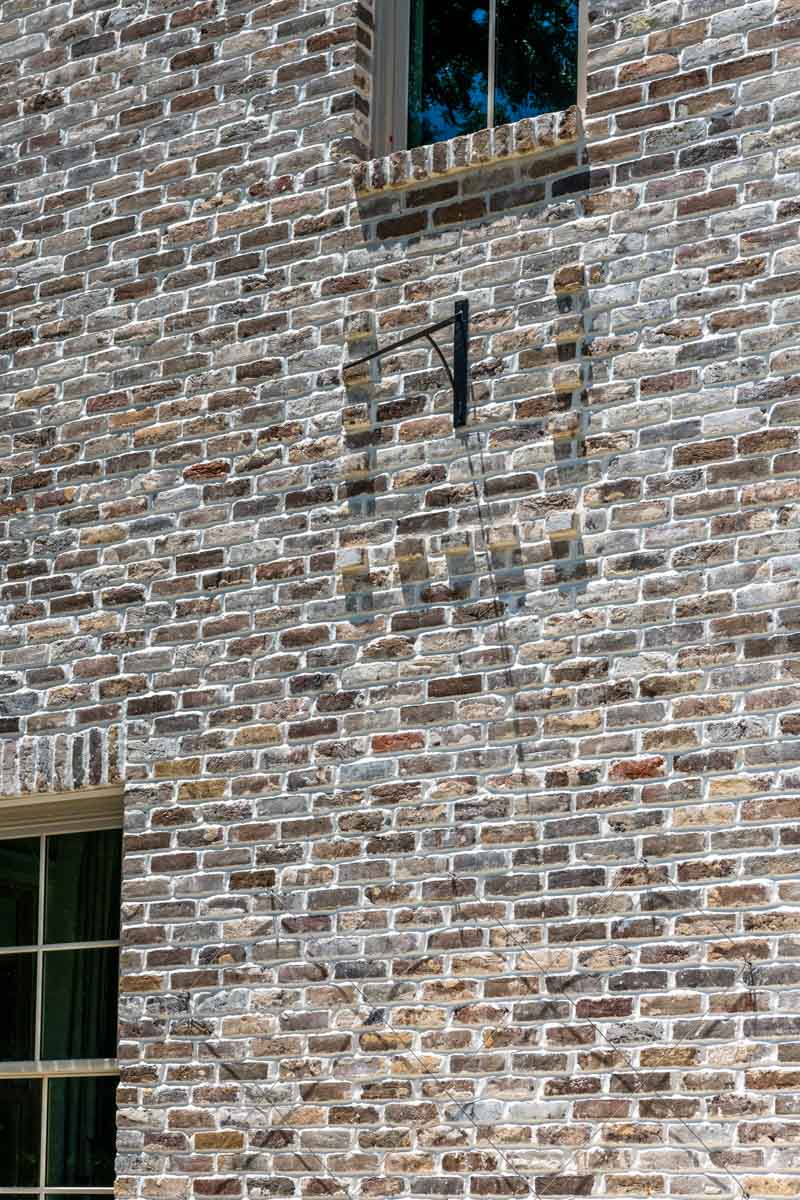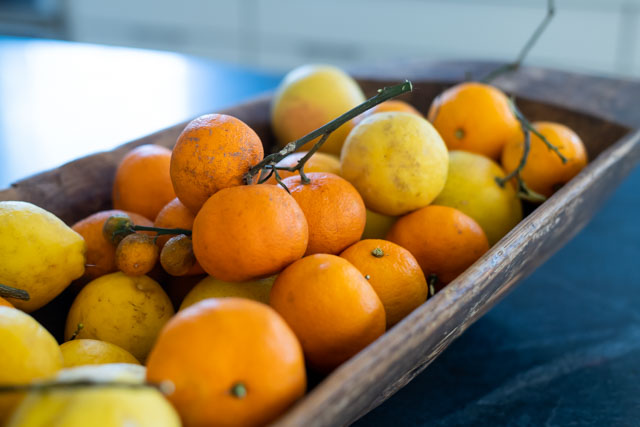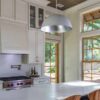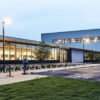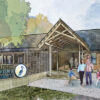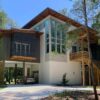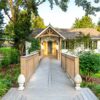Landscape
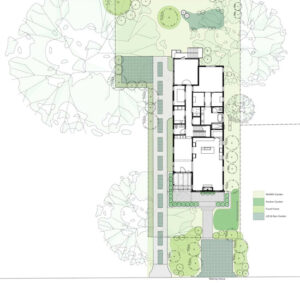
Sustainable Design Strategies
![]()
Planning and Design
Too often we think of landscaping around our homes as merely decorative, an aesthetic accessory. But before the home existed, the land was home to other beings- birds, pollinators, maybe even foxes or deer. If we aren’t careful, the landscape around our homes and businesses can become a “food desert” for the wildlife that makes our community so unique, including the monarchs on their way to Mexico and the estimated 2 billion birds that pass through each year. We live in one of 36 areas in the world designated as biodiversity “hot spots”for both the abundance of life, and the level of threat facing the ecosystems.
This landscape was designed as a habitat restoration and enhancement, to celebrate that biodiversity. The native and adapted plants are low maintenance, able to survive without irrigation once properly established, and to thrive without the chemical pesticides and fertilizers that can pollute our bay and waterways. When people hear the word “habitat” they tend to think of wildlife, of course. But people also have evolved in nature, and the landscape is our habitat as well. So many of the native plants were selected for their appeal as edible, medicinal, or decorative plants for cuttings. And in addition to the native plants, we have included some edible cultivars for the homeowners to enjoy and share.
The landscape design was a collaboration between Rebecca Bryant of WATERSHED, Rick Wells of Pensacola Permaculture, and Andrew Robinson of Father Nature Landscapes.
Food Forest
![]() The design includes four areas of emphasis or zones. The front yard was designed as a Food Forest, and includes a cluster of citrus trees near the street to share with neighbors, and a variety of other edible plants for foraging, including figs, muscadine, and blueberries.
The design includes four areas of emphasis or zones. The front yard was designed as a Food Forest, and includes a cluster of citrus trees near the street to share with neighbors, and a variety of other edible plants for foraging, including figs, muscadine, and blueberries.
Kitchen Garden
![]() The planter beds surrounding the terrace soften the entryway, and also serve as a Kitchen Garden, with bay laurel, creeping oregano, rosemary, and other herbs at easy reach for cuttings. A “Belgian fence” espalier of pomegranate trees serves as a focal point on the south wall of the home at the entry, showing off this ancient super fruit. A small hedge of tea camellias buffers the guest parking area. Leaves can be harvested to make black and green tea.
The planter beds surrounding the terrace soften the entryway, and also serve as a Kitchen Garden, with bay laurel, creeping oregano, rosemary, and other herbs at easy reach for cuttings. A “Belgian fence” espalier of pomegranate trees serves as a focal point on the south wall of the home at the entry, showing off this ancient super fruit. A small hedge of tea camellias buffers the guest parking area. Leaves can be harvested to make black and green tea.
Wildlife Garden
 Beyond the kitchen garden, the remainder of the landscape is a Wildlife Garden, showcasing native plants that provide food in the form of berries, nuts, and nectar. Many of these plants have medicinal and other useful qualities, like the Inkberry/Appalachian Tea plant that can be made into tea, or Purple Coneflower/Echinacea which is used to boost the immune system. The groundcover in the center of the driveway is Perennial Peanut which returns nitrogen to the soil, as do the silverberry plants that create a privacy hedge. Bird and butterfly attracting trees are intentionally located within sight lines from the house, to offer front row views into the annual migrations of monarchs and neo-tropical songbirds that travel through Fairhope.
Beyond the kitchen garden, the remainder of the landscape is a Wildlife Garden, showcasing native plants that provide food in the form of berries, nuts, and nectar. Many of these plants have medicinal and other useful qualities, like the Inkberry/Appalachian Tea plant that can be made into tea, or Purple Coneflower/Echinacea which is used to boost the immune system. The groundcover in the center of the driveway is Perennial Peanut which returns nitrogen to the soil, as do the silverberry plants that create a privacy hedge. Bird and butterfly attracting trees are intentionally located within sight lines from the house, to offer front row views into the annual migrations of monarchs and neo-tropical songbirds that travel through Fairhope.
Rain Garden
![]() The rear yard is shaped to capture and infiltrate the rainwater from the roof and driveway. All the plants in the Rain Garden are able to tolerate inundation as well as drought. The mix of grasses and flowering plants is intended to provide year round interest. The rain garden will be dry most of the time. It is sized to hold, filter, and infiltrate rainwater flowing off of the roof and driveway from a significant storm and will also receive the water collected from the foundation drains. This simple landscape feature is a Low Impact Design technique that is greatly needed in our area. The water collected in the rain garden will percolate into the soil within 12 hours or less. The soil acts as a natural filter, as the water infiltrates down and eventually recharges the water table. The rain garden helps to prevent flooding and erosion, by managing water on site, and it also recharges our groundwater resources and prevents pollution of our waterways.
The rear yard is shaped to capture and infiltrate the rainwater from the roof and driveway. All the plants in the Rain Garden are able to tolerate inundation as well as drought. The mix of grasses and flowering plants is intended to provide year round interest. The rain garden will be dry most of the time. It is sized to hold, filter, and infiltrate rainwater flowing off of the roof and driveway from a significant storm and will also receive the water collected from the foundation drains. This simple landscape feature is a Low Impact Design technique that is greatly needed in our area. The water collected in the rain garden will percolate into the soil within 12 hours or less. The soil acts as a natural filter, as the water infiltrates down and eventually recharges the water table. The rain garden helps to prevent flooding and erosion, by managing water on site, and it also recharges our groundwater resources and prevents pollution of our waterways.
A recirculating fountain is positioned at the edge of the rain garden. The basin is recharged by rainwater. The splashing of the fountain can be heard when homeowners exit their vehicles in the carport, and when they are relaxing on the Bayview Porch. Both the sound and sight of water have been shown to lower heart rates and reduce stress. It is another way that this home is designed to welcome people to a home that is also a habitat, and remind them of the water that makes this place so special, and that also needs our protection.




